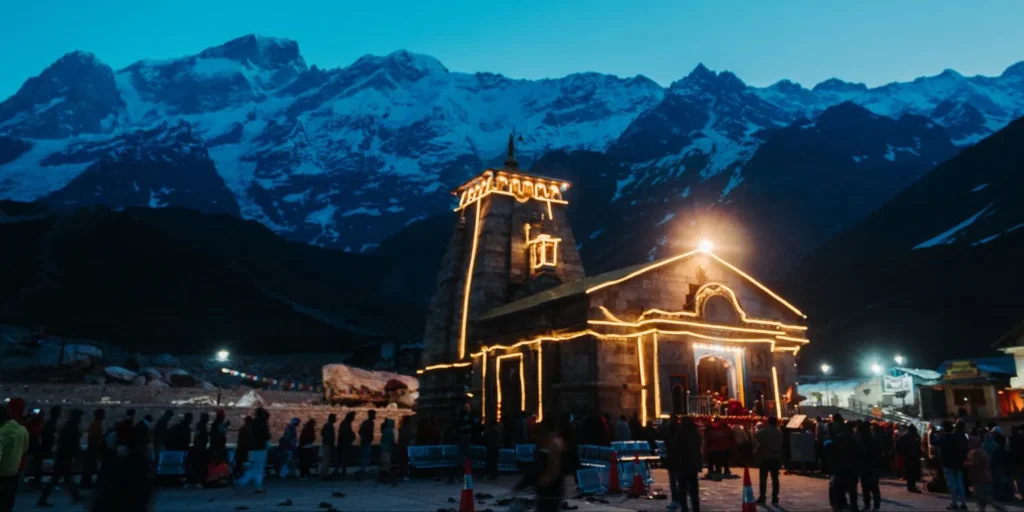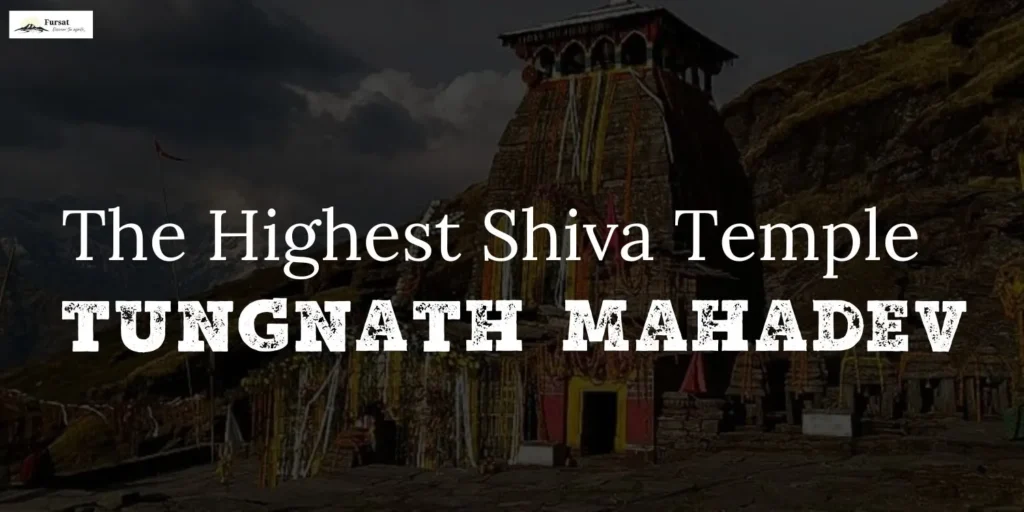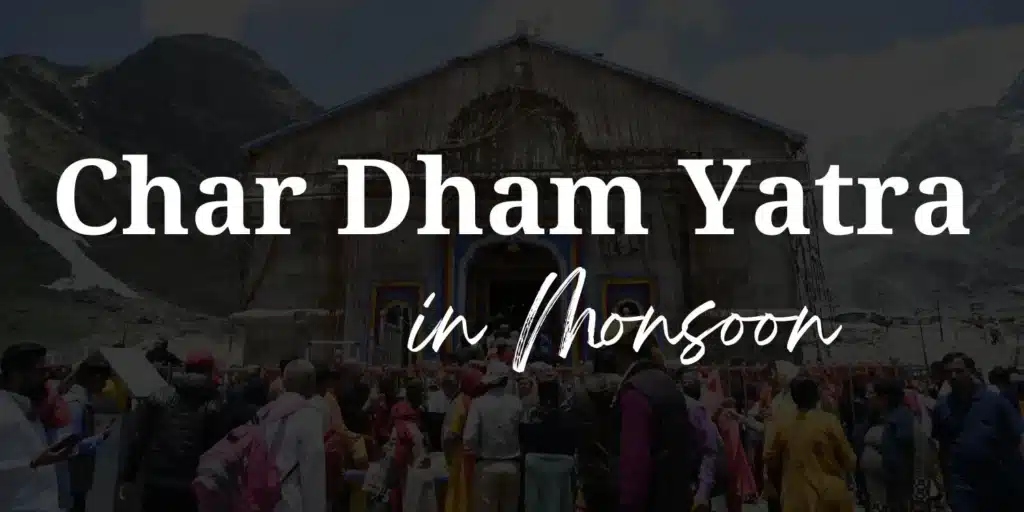Kedarnath Temple is located in the Garhwal Himalayan range near the Mandakini river, in the state of Uttarakhand, India. It is situated in Rudraprayag district.
The temple is open to the general public only between Akshaya Tritiya (May) and Kartik Purnima (November). The name Kedarnath means The Lord of The Field. It derives from the Sanskrit words kedara (field) and natha (lord)
In this post, we’ll explore the temple’s history, significance, and attractions, as well as the best ways to plan your visit.
History of Kedarnath Dham
Kedarnath’s story begins in the 8th century, when the renowned sage and philosopher Adi Shankaracharya wrote about its significance. This visionary traveler journeyed from Kerala to Kedarnath, establishing numerous temples and pilgrimage routes along the way.
His mission was to revitalize interest in Hinduism, and he achieved this by creating the Chota Char Dham Yatra in Uttarakhand.
Adi Shankaracharya’s Legacy
Legend has it that Adi Shankaracharya spent a substantial part of his life in Kedarnath and even attained samadhi (enlightenment) there. A shrine near the temple honors his contributions to establishing vital pilgrimage sites.
After the devastating floods in 2013, this shrine is being rebuilt in an underground chamber to preserve it for future generations.
Also Read: Neem Karoli Baba Ashram Nainital
Kedarnath during the Ice Age

The Kedarnath Temple has long been a source of fascination for scientists, who have sought to uncover its secrets. Despite the exact date of its construction remaining unknown, researchers from Dehradun made a groundbreaking discovery.
They found that the temple had been buried under snow for an astonishing 400 years during a mini ice age!
Tests on the temple walls revealed yellowish lines, indicating long periods of snow cover. This remarkable finding shed light on the temple’s resilience.
Despite being buried under snow for centuries, the temple remained intact, a testament to the ingenuity of its builders. They had clearly considered the harsh weather conditions in the region, constructing the temple to withstand the forces of nature.
Also Read: 7 Temples In Kumaon You Must Visit
Kedarnath and The Mahabharata Connection
According to legend, the Pandavas, seeking forgiveness for killing their relatives in the Kurukshetra war, went in search of Lord Shiva. They first went to Varanasi, but Shiva, angry over the deaths, hid in the Garhwal region as a bull. Bhima, one of the Pandavas, eventually found Shiva disguised as a bull near Guptakashi. Shiva then vanished and reappeared in parts at Kedarnath, Tungnath, Rudranath, Madhyamaheshwar, and Kalpeshwar. The Pandavas built temples at these sites, now known as the Panch Kedar.
In another version, Bhima caught the bull, causing it to split into five parts, each appearing in different places. The Pandavas then performed a yagna (sacrificial ritual) at Kedarnath, achieving salvation.
Also Read: The Legend Of Osla Village
Historical Evidence and Theories

Kedarnath Temple Construction:
The Kedarnath Temple’s construction is credited to the Pandava brothers mentioned in the Mahabharata. However, the Mahabharata does not mention any place called Kedarnath.
Kedara (Kedarnath):
One of the earliest references to Kedarnath occurs in the Skanda Purana (c. 7th-8th century), which names Kedara (Kedarnath) as the place where Shiva released the holy waters of Ganga from his matted hair, resulting in the formation of the Ganges River.
Adi Shankaracharya:
According to the hagiographies based on Madhava’s Sankshepa-Shankara-Vijaya, the 8th-century philosopher Adi Shankaracharya died near the Kedarnath mountains. Although other hagiographies, based on Anandagiri’s Prachina-Shankara-Vijaya, state that he died at Kanchipuram.
Kedarnath as a Prominent Pilgrimage Centre:
Kedarnath was definitely a prominent pilgrimage center by the 12th century when it is mentioned in Kritya-kalpataru written by the Gahadavala minister Bhatta Lakshmidhara.
Also Read: Mahasu Devta Temple In Hanol
Kedarnath Yatra 2024 New Guidelines
The Uttarakhand government has introduced a new rule. Visitors to Gangotri, Yamunotri, Kedarnath, and Badrinath temples are no longer allowed to take videos or make short videos like reels within 50 meters of the temple area.
This means you can’t capture videos or create reels anymore. These activities were making other pilgrims uncomfortable. Be sure to follow these new guidelines to avoid any trouble.
Also Read: Tungnath Mahadev- The Highest Shiva Temple
Frequently Asked Questions (FAQs)

Question: Where is Kedarnath Temple located?
Answer: Kedarnath Temple is located in the Rudraprayag district of Uttarakhand, India, in the Garhwal Himalayas.
Question: What is the significance of Kedarnath Temple?
Answer: Kedarnath Temple is one of the twelve Jyotirlingas, a sacred Hindu pilgrimage site dedicated to Lord Shiva.
Question: Who built Kedarnath Temple?
Answer: The temple’s construction is attributed to the Pandavas, while Adi Shankaracharya is said to have built a new temple nearby.
Question: What is the best time to visit Kedarnath Temple?
Answer: The best time to visit is from April to June and September to October, when the weather is pleasant and accessible.
Question: How do I reach Kedarnath Temple?
Answer: The nearest airport is Jolly Grant Airport in Dehradun, and the nearest railway station is Rishikesh. From there, you can take a road trip or trek to Kedarnath.
Question: What is the distance from Gaurikund to Kedarnath Temple?
Answer: The distance is approximately 16 km, and you can trek or take a horse or palanquin ride.
Question: What are the accommodation options near Kedarnath Temple?
Answer: There are various options, including government-run GMVN guesthouses, private hotels, and lodges.
Question: What is the temple’s opening and closing time?
Answer: The temple opens at 4:00 a.m. and closes at 8:00 p.m.
Question: Can I take a helicopter to Kedarnath Temple?
Answer: Yes, helicopter services are available from Phata, Guptkashi, or Sersi to Kedarnath.
Question: Is there any medical facility available near the temple?
Answer: Yes, there are medical facilities and hospitals in Kedarnath and nearby areas.
Question: Can I perform a puja or darshan at Kedarnath Temple?
Answer: Yes, you can perform puja and darshan at the temple with the help of local priests.
Also Read: The Char Dham Yatra In Monsoon Season
Final Words
Kedarnath Temple is a special place in the beautiful Himalayan mountains. It’s a place where people go to connect with God and find inner peace. The temple has a rich history and is surrounded by stunning natural beauty.
As you walk towards the temple, you can feel the energy of the place. The temple itself is a symbol of hope and strength. It shows us that even in difficult times, we can find comfort and guidance.
When you visit Kedarnath Temple, you’ll feel a sense of calm and peace. You’ll be reminded of the beauty and wonder of life. And as you leave, you’ll carry those feelings with you, and they’ll stay in your heart forever.
Also Read: 7 Temples In Kumaon You Must Visit




